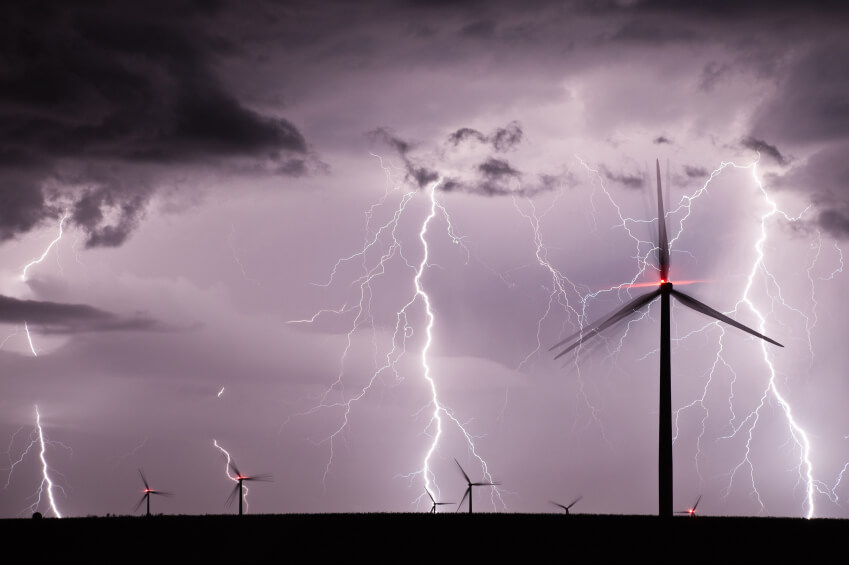

EUROLAB offers the following electromagnetic phenomenon services for your wind power application:

Engineering services:
Protection Design:
Digital Simulation Services
Exposure assessments - zoning (LPX) according to IEC 61400-24
Damage Risk Assessments for on-site or off-site turbine inspections for incident investigation
Retrofit Design Services
High Voltage Impulse Connection Test
High Current Physical Damage Tests
EUROLAB uses COMSOL as the modeling environment. Our fully validated, industry-standard modeling suite solves differential and partial differential equation systems that contain the materials and boundary conditions specified in the model.
Our modeling approach supports physical connections such as heat transfer and currents, and offers countless options for customizing and developing models for almost any situation.
EUROLAB develops electromagnetic models for wind turbine blades, analyzes the distributions between structural carbon and surface protection layers, determines transient voltages and currents to optimize lightning conductor positions, tolerances and more. We can accurately simulate the IEC 62305 waveforms required for all lightning protection levels (LPL).
In general, models are created by decomposing CAD-level data into COMSOL local shapes. This allows determination of what is electromagnetically important, such as currents or currents induced through the blade, including CFRP pultrusions, heater elements, surface protection layers, and down conductors.
Models capture critical design details such as material thicknesses, conductor orientation, and receptor locations. The assessment reveals performance risks, such as the arc between conductive materials and blade elements, the arc between structures and transient currents induced to control systems.
EUROLAB models simulate physics through Maxwell's equations and set up the test setup, i.e. return paths to the generator, etc. It is produced to reproduce. These are critical for initial model development. Replicated test setup results are compared to measurements taken unchanged to “match” the measurements.
EUROLAB engineers conduct analyzes to evaluate existing distributions for one or more candidate protection designs aimed at transmitting the lightning current with the lowest damage or repair potential. In order for these model data to be considered to be truly high accuracy, measurements taken during laboratory tests need to be fully verified and compared to analytical data to determine correlation. Such tests typically include:
Fully developed models have many benefits. These models, which are used for collecting early life cycle data, allow to examine areas where measurements are taken or not, and to make better decisions. Early life cycle modeling reduces certification risks, validates design methods for future (similar) designs, and allows similarity analyzes in future designs to reduce testing needs.
Our team helps in selecting materials and attachment methods that are most likely to be robust and require less repair after lightning strikes. We evaluate protection design materials and features such as connections, SPL and ETH pads to maintain the effects of multiple strokes.
In short, analytical models have been shown to reduce project life cycle testing costs and provide insight for basic design decisions.
To get an appointment, to get more detailed information or to request an evaluation, you can ask us to fill in our form and reach you.